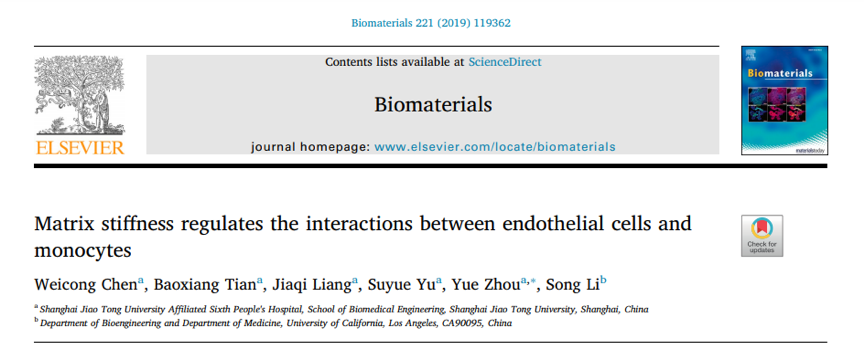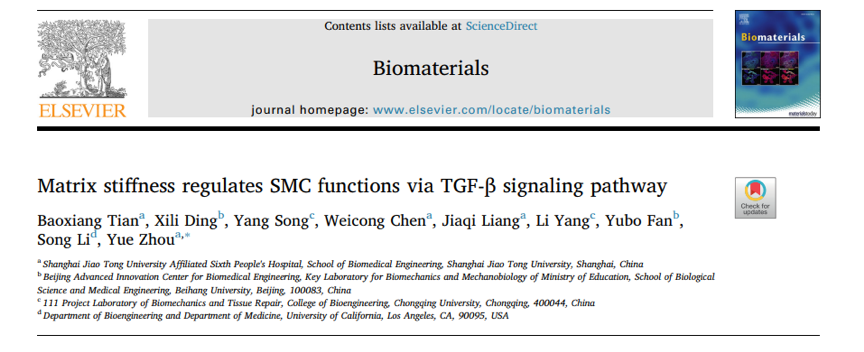


Yue Zhou 's team has made a significant discovery in the field of matrix hardness regulation of biological cells
October 22, 2019
Recently, Weicong Chen, a postgraduate student from the School of Biomedical Engineering, Shanghai Jiao Tong University, published "Matrix numbers regulates the interactions between colorectal cells and monocytes" as the first author on Biomaterials (IF=10.273). Besides, "Matrix bounties regulates SMC functions via TGF-β signaling pathway" by Baoxiang Tian (first author) also released in July 2019. Corresponding author is Associate Professor Yue Zhou. Their work was assisted by Song Li , bioengineering professor of the University of California, Los Angeles, along with researchers from Beijing University of Aeronautics and Astronautics and Chongqing University. This work is supported by the National Key Research and Development Program of China (2016YFC1100202).

Weicong Chen's paper clarified that base hardness can affect the chemotaxis and adhesion of monocytes by regulating the microRNA expression level of endothelial cells, thus affecting the inflammatory response of blood vessels.

Baoxian Tian showed that the hardness of substrate regulates vascular smooth muscle cell phenotype and remodeling of extracellular matrix through the TGF-β signaling pathway.
These two studies discusses how the material hardness affect regulation of different vascular cells and immune cells from different angles. On one hand, they set up a more scientific study of atherosclerosis model, on the one hand, they provide a new way of reflecting the biomedical engineering’s advantage position in the cross area of research.
References:
[1]. Chen W#, Tian B, Liang J, Yu S, Zhou Y*, Li S. Matrix stiffness regulates the interactions between endothelial cells and monocytes. Biomaterials. 2019 Nov;221:119362.
[2]. Tian B#, Ding X, Song Y, Chen W, Liang J, Yang L, Fan Y, Li S, Zhou Y*. Matrix stiffness regulates SMC functions via TGF-β signaling pathway. Biomaterials. 2019 Nov;221:119407.
Article link:
https://doi.org/10.1016/j.biomaterials.2019.119362